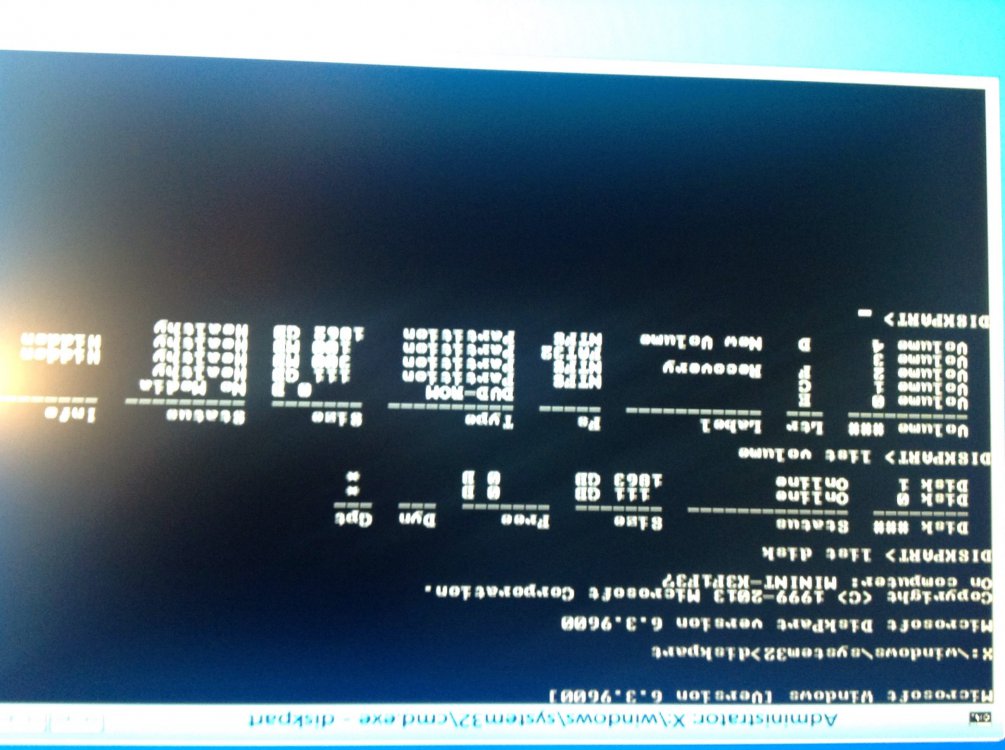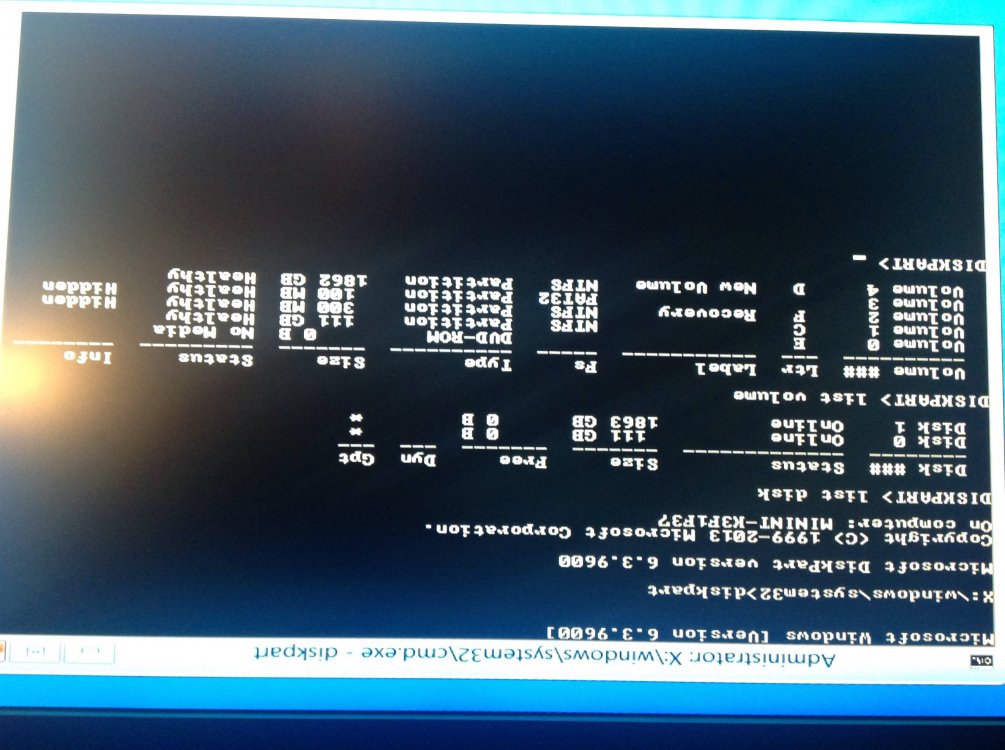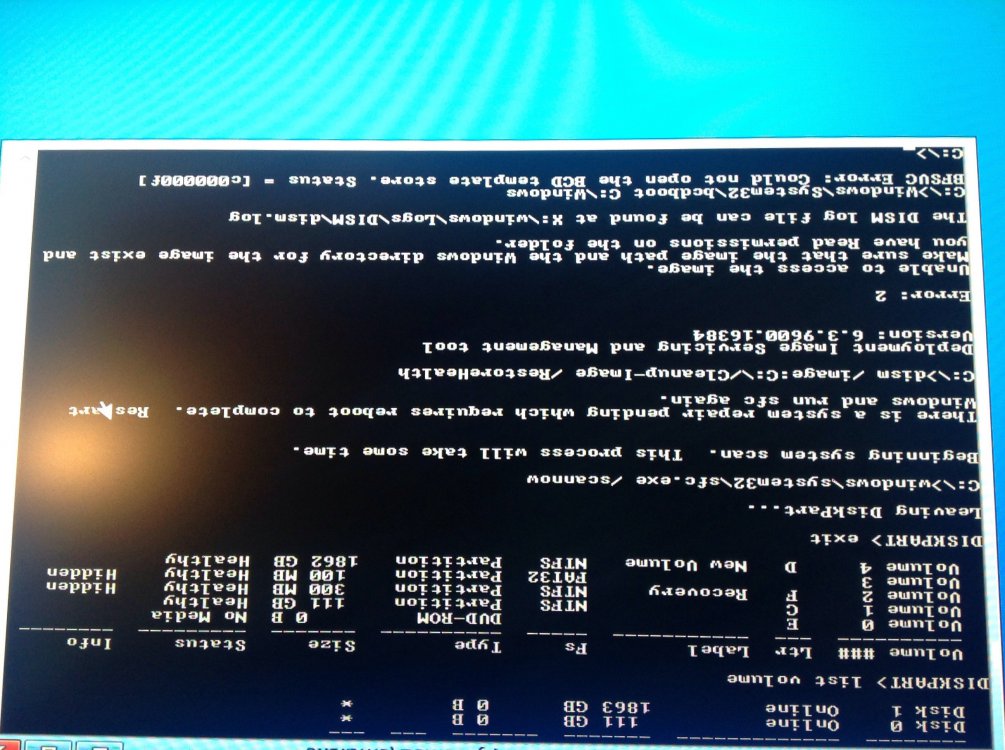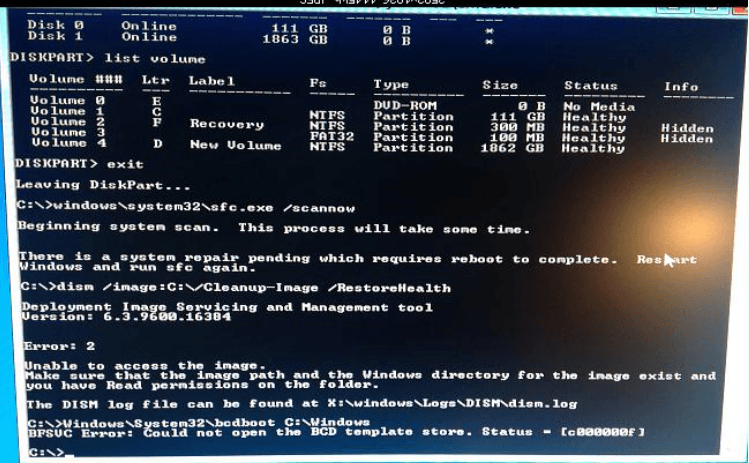

- Messages
- 2,467
- Location
- Bamberg Germany
Have you tried repairing your boot loader? If you're using UEFI(which I would guess):
source
source
to recover the loader (BCD) configuration, you have to boot from the original installation Windows 8 DVD (or a recovery disk or a special EFI bootable flash drive) and open the command line choosingSystem Restore – > Troubleshoot-> Command Prompt or pressing Shift+F10).
Start diskpart:
1 diskpart
Display the list of disks in the system:
1 list disk
Select the disk with Windows 8 installed (if there is one disk in the system, it will have zero index):
1 sel disk 0
Display the list of volumes in the system:
1 list vol
In this example, you can see that the EFI volume (it can easily be recognized by its size of 100 MB and FAT32 file system) has the index volume 1, and the boot volume with Windows 8 installed is volume 3.
Assign any disk letter to the EFI volume:
1 select volume 1
1 assign letter K:
Close diskpart:
1 exit
Go to the bootloader directory in the hidden volume
1 cd /d k:\efi\microsoft\boot\
Recreate the boot sector on the boot partition
1 bootrec /fixboot
Delete the current BCD configuration file by renaming it (save the older configuration as a backup):
1 ren BCD BCD.bak
With bcdboot.exe, create BCD store again by copying the boot files from the system directory:
1 bcdboot C:\Windows /l en-us /s k: /f ALL
where C:\Windows – is the path to the directory with Windows 8 installed.
/f ALL – means that the boot files have to be copied including those for UEFI and BIOS computers (potential ability to boot in EFI and BIOS systems)
/l en-us – is a type of the system locale. By default, en-us – English (USA) is used.
Now you have to restart your computer. Then in the list of bootable devices there appears Windows Boot Manager where you can choose desired operating system to start.
My Computer
System One
-
- OS
- Windows 8.1 Update Pro in Hyper-V/Windows 10 Pro 64 bit
- Computer type
- PC/Desktop
- System Manufacturer/Model
- Cliff's Black & Blue Wonder
- CPU
- Intel Core i9-9900K
- Motherboard
- ASUS ROG Maximus X Hero
- Memory
- 32 GB Quad Kit, G.Skill Trident Z RGB Series schwarz, DDR4-3866, 18-19-19-39-2T
- Graphics Card(s)
- ASUS GeForce RTX 3090 ROG Strix O24G, 24576 MB GDDR6X
- Sound Card
- (1) HD Webcam C270 (2) NVIDIA High Definition Audio (3) Realtek High Definition Audio
- Monitor(s) Displays
- BenQ BL2711U(4K) and a hp 27vx(1080p)
- Screen Resolution
- 1920 x 1080 x 32 bits (4294967296 colors) @ 60 Hz
- Hard Drives
- C: Samsung 960 EVO NVMe M.2 SSD
E: & O: Libraries & OneDrive-> Samsung 850 EVO 1TB
D: Hyper-V VM's -> Samsung PM951 Client M.2 512Gb SSD
G: System Images -> HDD Seagate Barracuda 2TB
- PSU
- Corsair HX1000i High Performance ATX Power Supply 80+ Platinum
- Case
- hanteks Enthoo Pro TG
- Cooling
- Thermaltake Floe Riing RGB TT Premium-Edition 360mm and 3 Corsair blue LED fans
- Keyboard
- Trust GTX THURA
- Mouse
- Trust GTX 148
- Internet Speed
- 25+/5+ (+usually faster)
- Browser
- Edge; Chrome; IE11
- Antivirus
- Windows Defender of course & Malwarebytes Anti-Exploit as a
- Other Info
- Router: FRITZ!Box 7590 AX V2
Sound system: SHARP HT-SBW460 Dolby Atmos Soundbar
Webcam: Logitech BRIO ULTRA HD PRO WEBCAM 4K webcam with HDR












